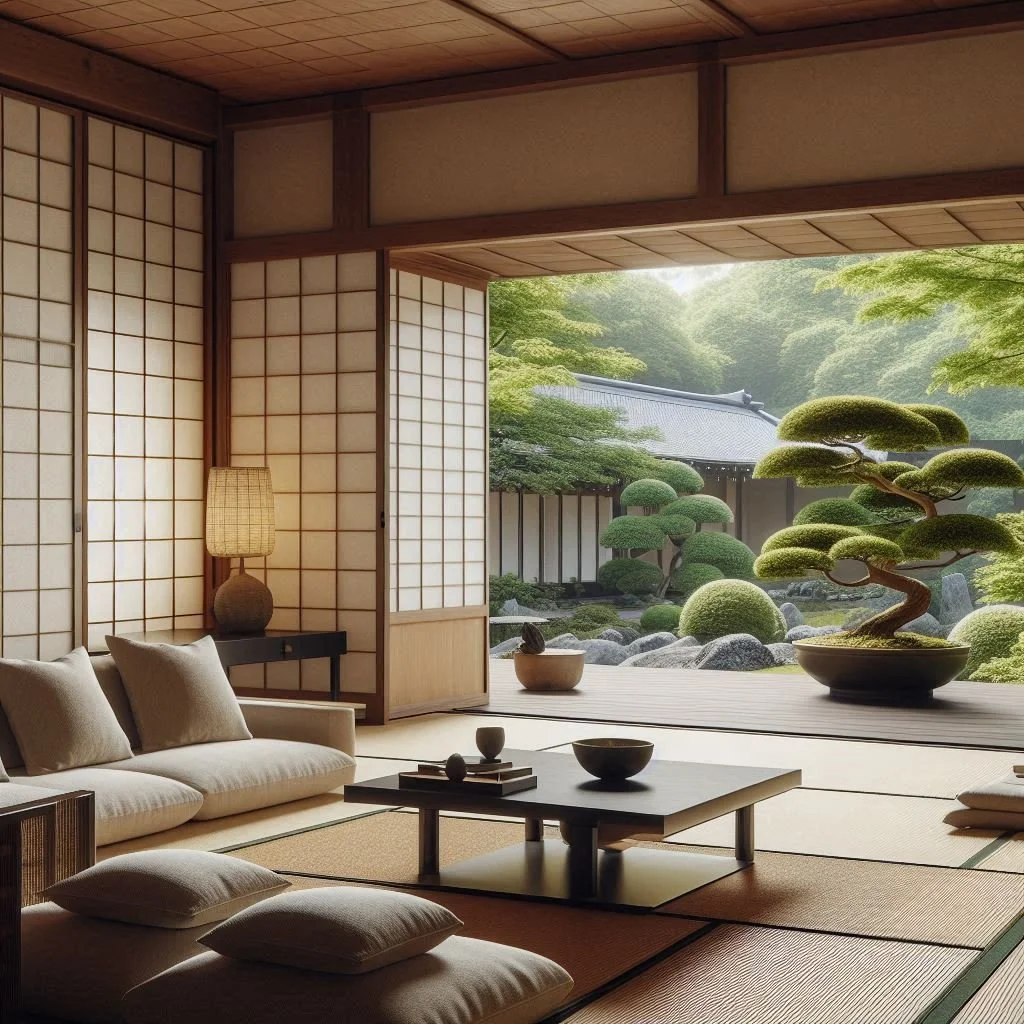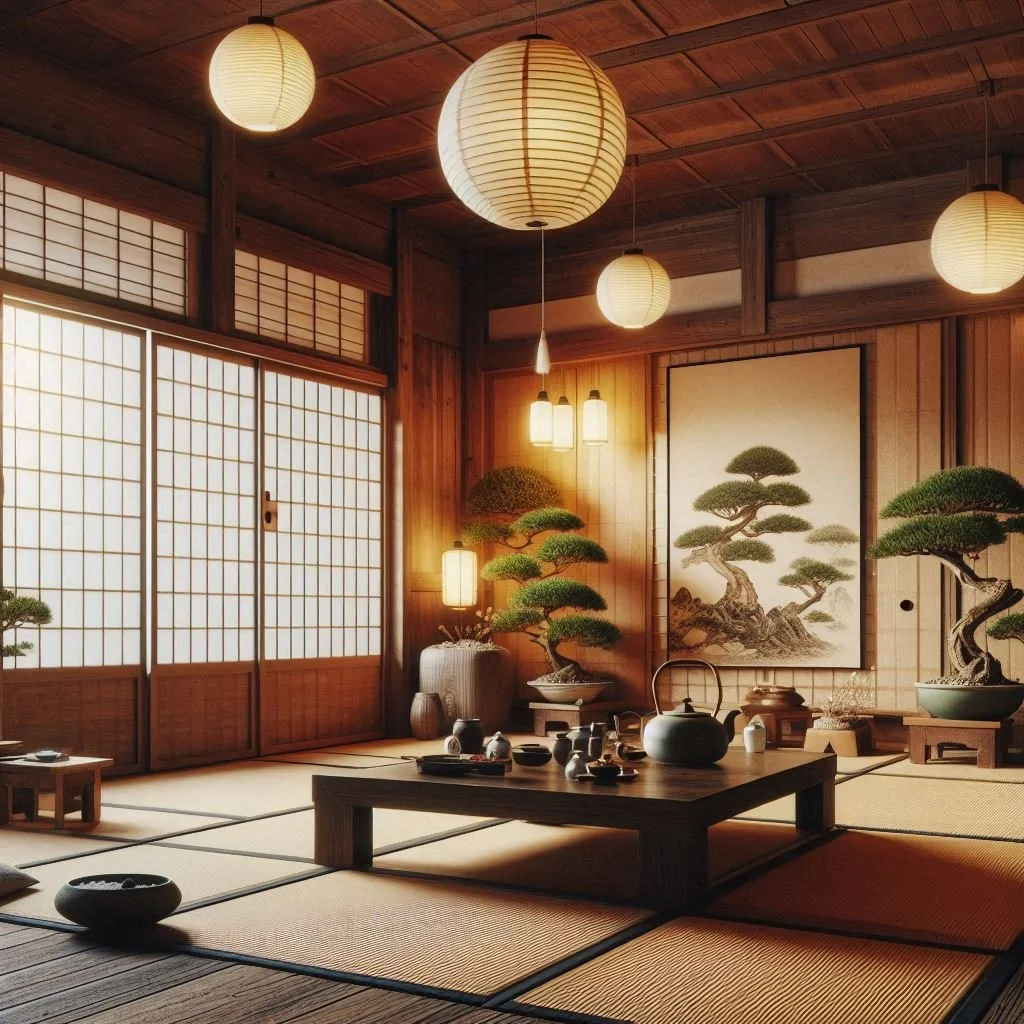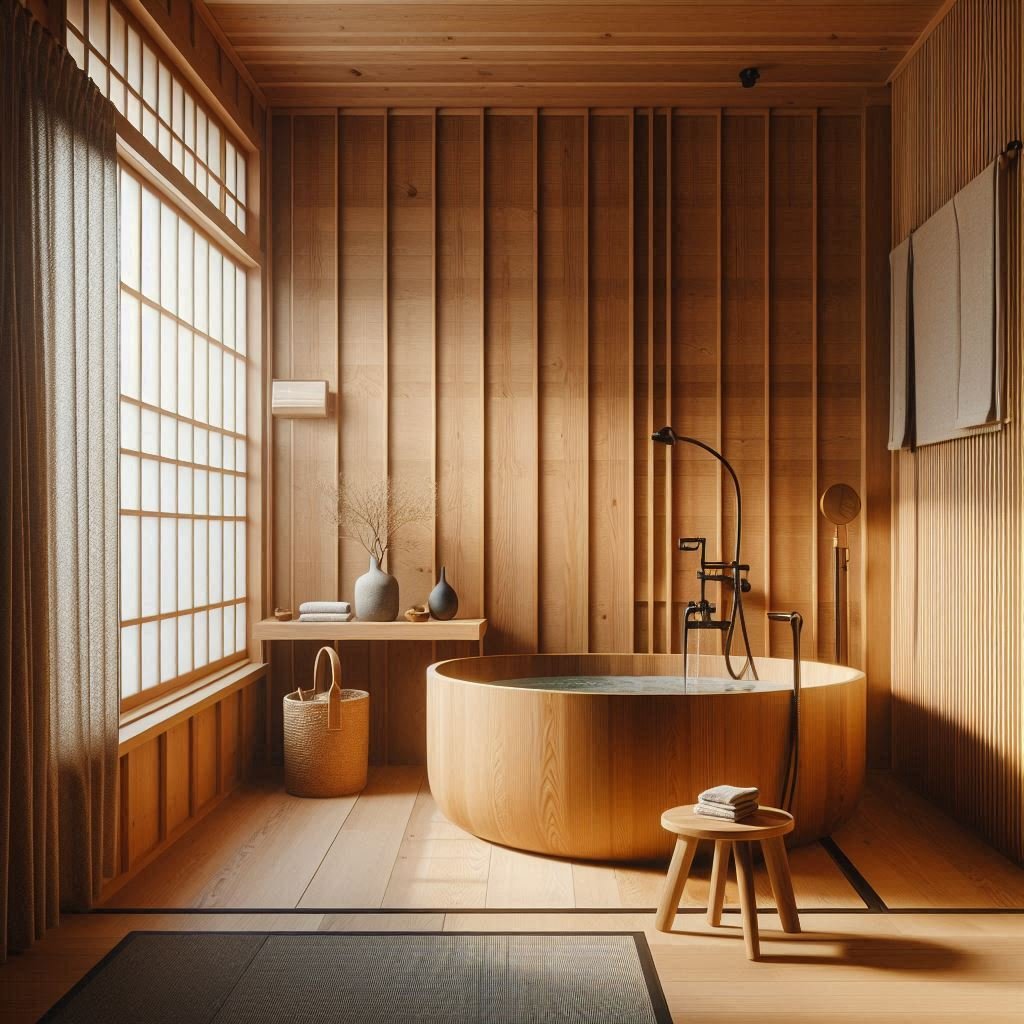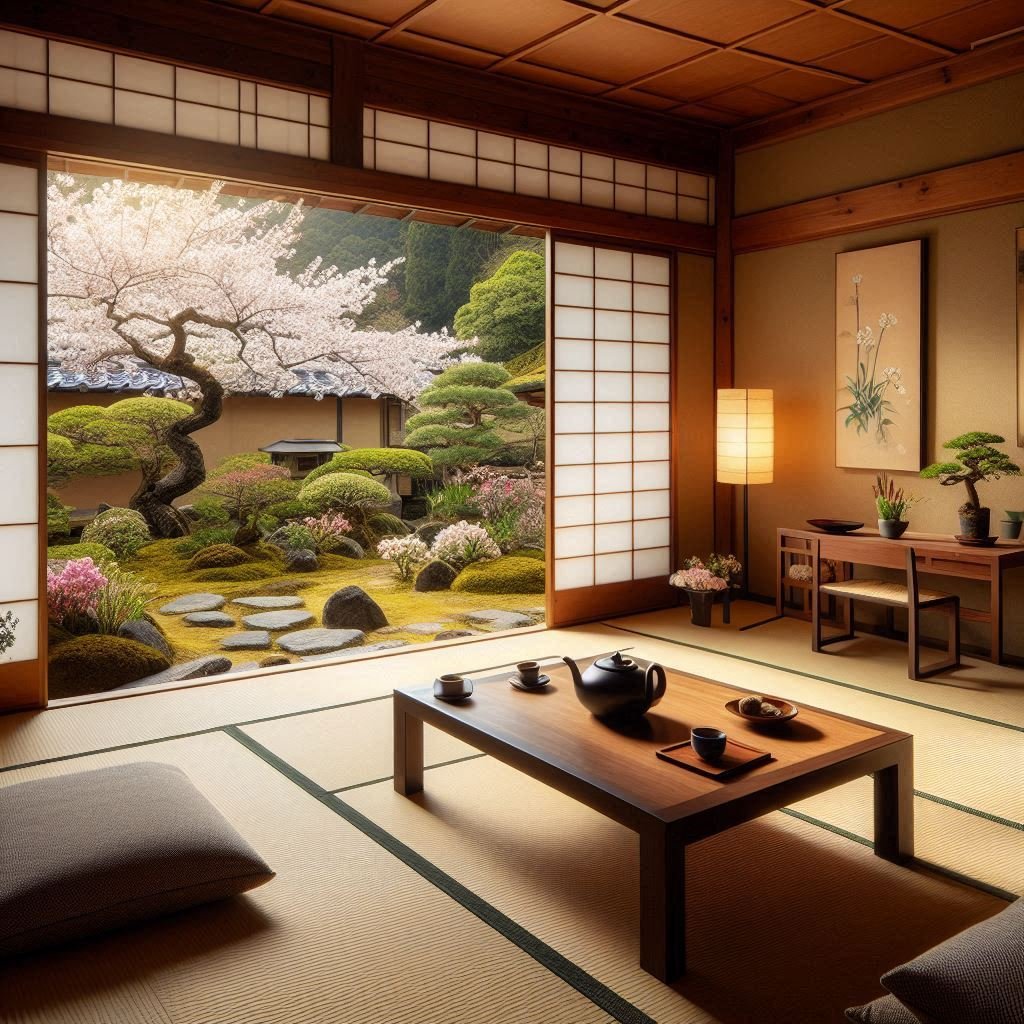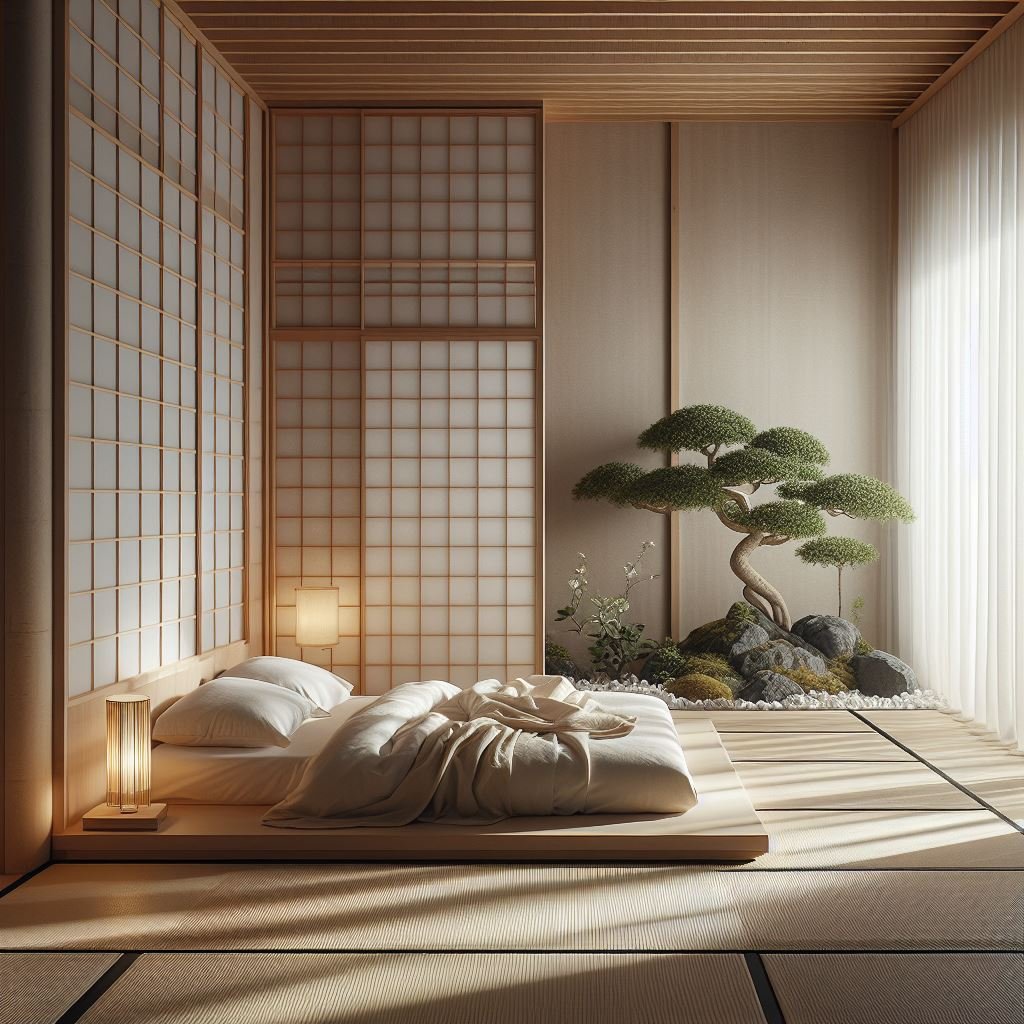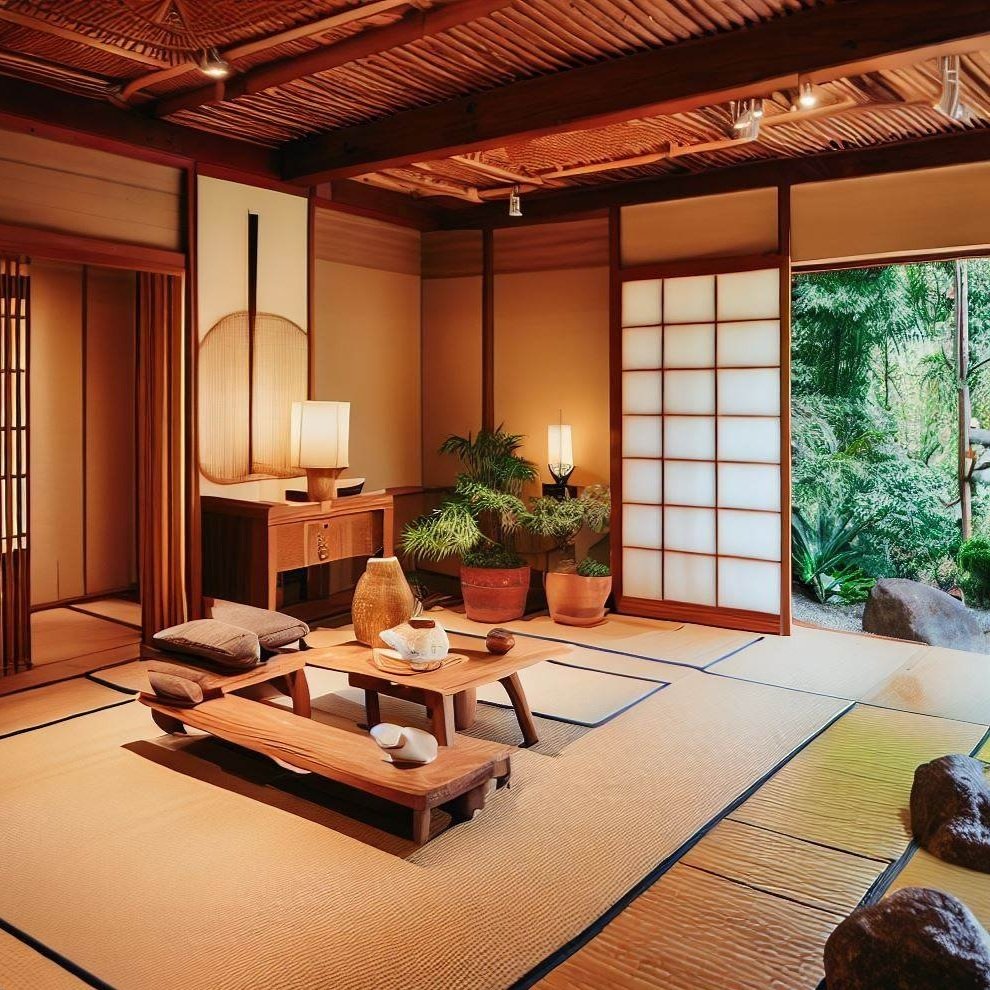15 Modern Japanese Home Ideas for a Minimalist Look
Discover 15 modern Japanese home ideas to achieve a minimalist look. From clean lines to natural materials, learn how to create a serene and functional space inspired by Japanese design.
Have you ever walked into a space that instantly calms your mind and soothes your spirit? If you’re looking to create a serene sanctuary in your home, modern Japanese design might be just what you need. Characterized by its minimalist approach, Japanese aesthetics emphasize simplicity, functionality, and a deep connection to nature. This design philosophy embraces clean lines, natural materials, and an uncluttered space, creating an environment that feels both elegant and peaceful. In this article, we’ll explore 15 modern Japanese home ideas that will help you achieve that tranquil, minimalist look. Ready to transform your living space? Let’s dive in!
1. Embrace Natural Materials
Incorporating greenery and plants can breathe life into your grey, black, and white kitchen, adding a refreshing touch to the sleek design. Consider easy-to-care-for plants like succulents or herbs, which thrive in indoor conditions and can even double as cooking ingredients. Placing them on windowsills, countertops, or hanging planters creates a vibrant contrast against the monochromatic palette, softening the sharp lines of modern decor. Additionally, plants improve air quality and create a more inviting atmosphere, making your kitchen feel like a welcoming space. Whether you choose a stylish terrarium or a simple potted herb garden, these natural elements will enhance the overall aesthetic while bringing a sense of warmth and vitality to your culinary haven.
2. Utilize Neutral Color Palettes
Neutral color palettes form the backbone of modern Japanese design, emphasizing tranquility and simplicity. Soft whites, grays, and earthy tones create a calming atmosphere that promotes relaxation and mindfulness. These hues reflect natural light beautifully, enhancing the feeling of openness and airiness in the space. For instance, you might choose a gentle cream for your walls, complemented by rich brown wooden accents that add warmth and texture. By keeping the color scheme simple and cohesive, you cultivate a sense of harmony throughout your home, allowing for a seamless flow between rooms. This thoughtful approach not only enhances the aesthetic but also fosters a serene environment where you can unwind and rejuvenate.
3. Incorporate Sliding Doors
One of the defining features of traditional Japanese architecture is the use of sliding doors, known as shoji screens. These elegant doors not only save space but also offer flexibility in room layouts, making them ideal for modern living. When open, shoji screens create a seamless flow between spaces, allowing light to traverse freely and enhancing the sense of openness. When closed, they provide privacy while still allowing soft light to filter through, maintaining a connection with the outside. This design element not only enhances the overall aesthetic but also embraces the principles of minimalism, maximizing functionality without compromising beauty. The use of shoji screens exemplifies how thoughtful design can harmonize form and function in a serene living environment.
4. Focus on Functional Furniture
In a modern Japanese home, functional furniture is essential for creating a harmonious living space. Opt for multi-use pieces that serve more than one purpose, such as a low-profile coffee table that also provides storage. Furniture should reflect clean lines and simplicity, steering clear of ornate designs that can clutter the aesthetic. The focus is on utility without sacrificing style, allowing each piece to contribute meaningfully to the room’s overall balance. By prioritizing practicality, you can create a space that feels open and inviting, embodying the essence of modern Japanese design. This approach not only maximizes functionality but also promotes a serene and organized atmosphere throughout the home.
5. Create an Indoor Garden
Bringing the outdoors inside can have a profound impact on your space, transforming it into a serene retreat. Consider designing an indoor garden or incorporating elements of a Zen garden with stones, sand, and carefully placed plants to evoke tranquility. Integrating live plants not only enhances air quality but also adds a refreshing touch of green to your home. Use minimalistic planters and natural materials to maintain the harmonious aesthetic of modern Japanese design. This connection to nature beautifies your space while fostering a calming environment, making it a perfect place for relaxation and reflection. By thoughtfully arranging these elements, you can create a soothing sanctuary that invites peace and mindfulness into your daily life.
6. Maximize Natural Light
Natural light is a vital component of modern Japanese design, enhancing the overall aesthetic and atmosphere of your home. Incorporate large windows to maximize sunlight and create a sense of openness. Light-filtering curtains can soften the incoming light while maintaining privacy, allowing a gentle glow to fill the room. This emphasis on natural light not only strengthens the connection to the outdoors but also fosters a warm and inviting ambiance that uplifts the spirit. By strategically positioning windows and using materials that enhance brightness, you can create a serene environment that promotes relaxation and well-being, embodying the principles of harmony and tranquility inherent in modern Japanese design.
7. Incorporate Open Spaces
Modern Japanese design embraces open spaces that facilitate movement and interaction, creating an inviting and harmonious environment. By utilizing minimal dividers or open floor plans, you can establish a seamless flow between rooms, enhancing the overall sense of spaciousness. This design approach is particularly beneficial in smaller homes, where every square inch matters. It allows natural light to travel freely throughout the space, making areas feel larger and more connected. Incorporating sliding doors or low partitions can help define spaces without sacrificing openness, maintaining an airy, minimalist aesthetic. This focus on fluidity not only promotes a calming atmosphere but also encourages a sense of community within the home, reflecting the core values of modern Japanese design.
8. Add Japanese-Inspired Textiles
Textiles play a significant role in Japanese decor, enhancing both comfort and aesthetic appeal. Incorporate natural fiber fabrics like cotton and linen for cushions, curtains, and bedding to create a soft and inviting atmosphere. Look for patterns that reflect nature, such as delicate floral motifs or gentle wave designs, which not only add visual interest but also reinforce the connection to the natural world. These textiles can bring warmth to minimalist spaces, softening hard surfaces and contributing to a cozy, lived-in feel. When thoughtfully chosen, they complement the overall design while promoting a sense of tranquility and harmony, embodying the essence of modern Japanese living.
9. Utilize Zen Principles
Incorporating Zen principles into your design can create a calm atmosphere that fosters mindfulness and relaxation. Focus on simplicity and decluttering to promote a serene environment that encourages tranquility. This involves emphasizing clean lines, natural materials, and a minimalist approach to furnishings and decor. Avoid unnecessary decoration and opt for thoughtfully selected pieces that resonate with a sense of calm. Incorporate elements like soft lighting, natural textures, and harmonious colors to enhance the peaceful ambiance. By creating spaces that invite reflection and connection with nature, you can transform your home into a sanctuary that nurtures well-being and encourages a balanced lifestyle.
10. Incorporate Art and Calligraphy
Art is an essential element of Japanese culture, and incorporating Japanese artwork and calligraphy into your home adds depth and character. Opt for pieces that resonate with you personally, whether they are traditional ink paintings, contemporary art, or beautifully framed calligraphy. Consider showcasing a mix of styles, from serene landscapes to abstract designs, to create a dynamic visual narrative. Display them thoughtfully in prominent areas, such as above furniture or on accent walls, to create focal points that inspire and reflect your unique aesthetic. The presence of these art pieces not only enhances the overall decor but also fosters a deeper appreciation for Japanese culture and artistry within your living space.
11. Choose Simple Lighting Fixtures
When it comes to lighting, opt for simple fixtures that enhance the minimalist aesthetic. Paper lanterns, wooden pendant lights, and soft, warm bulbs create a cozy ambiance while keeping the design uncluttered. These lighting choices not only illuminate the space but also contribute to the overall aesthetic, emphasizing natural materials and clean lines. Incorporating dimmers can offer flexibility, allowing you to adjust the brightness according to the mood. Whether you're entertaining guests or enjoying a quiet evening, lighting should serve both functional and decorative purposes, adding warmth and character without overwhelming the room. By thoughtfully selecting your fixtures, you can create a serene atmosphere that complements the modern Japanese design ethos.
12. Create a Serene Bedroom Retreat
Your bedroom should be a sanctuary of tranquility, designed to promote relaxation and peace. Incorporate futons and tatami mats for a traditional Japanese touch, blending seamlessly with minimalist furniture to create a clean, streamlined look. Keep the layout simple and uncluttered, allowing for easy movement and an open, airy feel. By minimizing distractions and focusing on functional, serene design elements, your bedroom can become a calming retreat. Soft, neutral colors and natural materials like wood and linen will enhance the sense of peace, creating a space where you can unwind, recharge, and rejuvenate after a long day.
13. Use Thoughtful Accessories
In a modern Japanese home, every accessory should serve a purpose and contribute to the overall harmony of the space. Emphasize decluttering by selecting items that enhance the design rather than distract from it. Consider meaningful decorative pieces that reflect your personal style, such as handcrafted ceramics, elegant wooden bowls, or minimalistic vases. These thoughtful accessories not only elevate the ambiance but also create a sense of warmth and intimacy. By focusing on quality over quantity, you can achieve a serene environment that celebrates simplicity and functionality, allowing each item to shine while maintaining an uncluttered aesthetic. This approach fosters a tranquil atmosphere that invites relaxation and reflection.
14. Incorporate Outdoor Elements
Blurring the lines between indoor and outdoor spaces enhances the organic feel of your home, creating a seamless flow that invites nature inside. Using sliding glass doors allows for easy transitions and offers unobstructed views of the outdoors, making your living space feel more expansive and connected to the environment. This design choice not only fosters a sense of tranquility but also enhances the overall ambiance, bringing in natural light and fresh air. By integrating elements like outdoor patios or gardens into your interior design, you reinforce the organic modern aesthetic, creating a harmonious balance between your home and its surroundings. This connection to nature promotes a peaceful atmosphere, ideal for relaxation and rejuvenation.
15. Foster a Mindful Space
Incorporating areas for mindfulness and reflection in your home enhances the overall sense of tranquility and well-being. Designate a quiet corner for meditation or yoga, where you can connect with yourself and your surroundings. Soft mats and cushions provide comfort, while calming decor—such as plants, candles, or serene artwork—creates an inviting atmosphere. Consider adding natural elements like stones or a small water feature to further promote relaxation and introspection. This dedicated space encourages you to unwind and find peace amidst the hustle and bustle of daily life, making it an essential part of your organic modern home. Embracing mindfulness in your design fosters a deeper connection to both your environment and yourself.
Conclusion
By embracing the principles of modern Japanese design, you can create a home that feels natural, serene, and beautifully minimal. From incorporating natural materials to fostering open spaces, these 15 ideas will help you achieve a harmonious environment that promotes peace and tranquility. Whether you’re redecorating a single room or transforming your entire home, the organic modern style will create a welcoming space that reflects your personality and values.
Read next: 15 Sleek Modern Japanese Interior Design Ideas
Frequently Asked Questions
What are the key principles of Japanese minimalist design?
Japanese minimalism focuses on simplicity, functionality, and a deep connection to nature, emphasizing clean lines and natural materials.
How can I maximize natural light in my home?
Use large windows, glass doors, and skylights, along with sheer curtains, to allow plenty of natural light to flow into your space.
What plants are best for a modern Japanese home?
Consider indoor plants such as bonsais, ferns, and peace lilies, which thrive in indoor environments and add a touch of greenery.
How do I incorporate sliding doors into my home?
Sliding shoji doors can be used to separate spaces while maintaining an open feel. They allow light to flow and create flexible room usage.
What are some eco-friendly materials to use in Japanese design?
Opt for materials like bamboo, recycled glass, and low-VOC paints to create a sustainable and environmentally-friendly home.
Stay up to date with our latest ideas!
Exclusive deals just for our readers! Click below to unlock special offers and elevate your shopping experience!



















